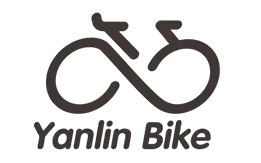
- Afrikaans
- Albanian
- Amharic
- Arabic
- Armenian
- Azerbaijani
- Basque
- Belarusian
- Bengali
- Bosnian
- Bulgarian
- Catalan
- Cebuano
- Corsican
- Croatian
- Czech
- Danish
- Dutch
- English
- Esperanto
- Estonian
- Finnish
- French
- Frisian
- Galician
- Georgian
- German
- Greek
- Gujarati
- Haitian Creole
- hausa
- hawaiian
- Hebrew
- Hindi
- Miao
- Hungarian
- Icelandic
- igbo
- Indonesian
- irish
- Italian
- Japanese
- Javanese
- Kannada
- kazakh
- Khmer
- Rwandese
- Korean
- Kurdish
- Kyrgyz
- Lao
- Latin
- Latvian
- Lithuanian
- Luxembourgish
- Macedonian
- Malgashi
- Malay
- Malayalam
- Maltese
- Maori
- Marathi
- Mongolian
- Myanmar
- Nepali
- Norwegian
- Norwegian
- Occitan
- Pashto
- Persian
- Polish
- Portuguese
- Punjabi
- Romanian
- Russian
- Samoan
- Scottish Gaelic
- Serbian
- Sesotho
- Shona
- Sindhi
- Sinhala
- Slovak
- Slovenian
- Somali
- Spanish
- Sundanese
- Swahili
- Swedish
- Tagalog
- Tajik
- Tamil
- Tatar
- Telugu
- Thai
- Turkish
- Turkmen
- Ukrainian
- Urdu
- Uighur
- Uzbek
- Vietnamese
- Welsh
- Bantu
- Yiddish
- Yoruba
- Zulu
Nov . 24, 2024 02:08 Back to list
how to adjust rear derailleur mountain bike
How to Adjust the Rear Derailleur on a Mountain Bike
Adjusting the rear derailleur of a mountain bike is crucial for ensuring smooth and efficient gear shifting. A well-tuned derailleur helps enhance your cycling experience, allowing for seamless transitions between gears and reducing wear on both the chain and cassette. Here’s a step-by-step guide on how to effectively adjust your rear derailleur.
Step 1 Gather Your Tools
Before you start, make sure you have the necessary tools. You will need
- A 5mm Allen wrench (for most derailleur bolts) - A Phillips or flathead screwdriver (for limit screws) - A bike stand or a way to elevate your bike (optional but helpful) - Chain lube, if necessary
Step 2 Inspect the Derailleur
Take a moment to visually inspect the rear derailleur. Check for any signs of damage, such as bent components or loosened bolts. Ensure the derailleur hanger (the part that holds the derailleur) is straight; a bent hanger can severely affect shifting performance. If everything looks good, you can proceed to adjust the derailleur.
Step 3 Set the Limit Screws
The first thing you need to do is set the limit screws. There are usually two limit screws on the derailleur one for the high gear (smallest cog) and one for the low gear (largest cog).
- High Limit Screw (H-Screw) Shift your bike to the smallest chainring in the front and the smallest cog in the rear. Adjust the H-screw to ensure the derailleur moves the chain onto the smallest cog without pushing it off. The derailleur should be close to the cog but not touching it. - Low Limit Screw (L-Screw) Now shift to the largest cog in the rear. Adjust the L-screw to allow the derailleur to shift onto the largest cog without slipping off to the side. Again, the derailleur should be positioned closely without touching the cog.
Step 4 Adjust the Cable Tension
how to adjust rear derailleur mountain bike

After setting the limit screws, it’s time to adjust the cable tension. This step is crucial for precise shifting.
- Shift to the middle gear (typically the third or fourth cog from the smallest). - If the chain doesn’t shift smoothly to the higher gears, turn the barrel adjuster on the derailleur or shifter counterclockwise to increase tension. If it doesn’t shift smoothly to lower gears, turn the barrel adjuster clockwise to decrease tension.
Step 5 Test the Shifting
With the limit screws and cable tension properly adjusted, it’s time to test the shifting. Shift through all the gears while pedaling forward. Observe how smoothly the chain transitions between cogs. If you experience any hesitations or hesitations, a small adjustment may still be needed in cable tension.
Step 6 Inspect the Chain Line
Ensure that your chain line is optimal. The chain should run in a straight line between the chainring and the rear cog. Misalignment can cause poor shifting and excessive wear. If needed, adjust the position of the derailleur slightly or ensure that your rear wheel is properly seated in the dropouts.
Step 7 Lubricate and Final Check
Finally, if your chain has been exposed to mud or dirt, clean and lubricate it to ensure smooth operation. Give the entire system a once-over to check that all bolts are secure and that the derailleur moves freely.
Conclusion
Adjusting your rear derailleur may seem daunting at first, but with patience and practice, you can achieve a perfectly tuned system. Regular maintenance of your bike, including derailleur adjustments, will enhance your riding experience, boost performance, and extend the longevity of your components. Happy riding!
-
The Ultimate Kids' Four-Wheeler Experience
NewsJul.09,2025
-
The Ultimate Guide to Mountain Bikes: Gear Up for Your Ride
NewsJul.09,2025
-
The New Age of Cycling: Electric Bikes for Every Rider
NewsJul.09,2025
-
The Best Kids Bicycles: Ride in Style and Safety
NewsJul.09,2025
-
The Best 3-Wheel Scooters for Kids: Fun, Safety, and Adventure
NewsJul.09,2025
-
Revolutionize Your Ride: Affordable Electric Bikes
NewsJul.09,2025
-
Finding the Perfect Mountain Bike for Every Rider
NewsJul.09,2025



